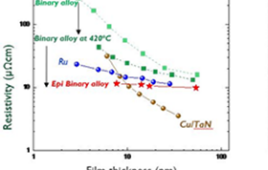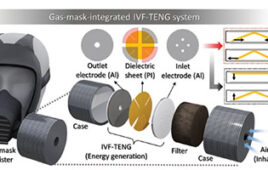Conductive and compressible carbon aerogels are useful in a variety of applications. In recent decades, carbon aerogels have been widely explored by using graphitic carbons and soft carbons, which show advantages in superelasticity.
These elastic aerogels usually have delicate microstructures with good fatigue resistance but ultralow strength. Hard carbons demonstrate great advantages in mechanical strength and structural stability due to the sp3 C-induced turbostratic “house-of-cards” structure.
However, stiffness and fragility clearly get in the way of achieving superelasticity with hard carbons. Up to now, it has been a challenge to fabricate superelastic hard carbon-based aerogels.
Recently, inspired by the flexibility and rigidity of natural spider silks, a research team led by Shu-Hong Yu from the University of Science and Technology of China developed a simple method to fabricate superelastic and fatigue resistant hard carbon aerogels with nanofibrous network structure by using resorcinol-formaldehyde resin as a hard carbon source. This work, “Superelastic hard carbon nanofiber aerogels, “was published in Advanced Materials.
They report their process thus: The polymerization of resin monomers was initiated in the presence of nanofibers as structural templates to prepare a hydrogel with nanofibrous networks, followed by drying and pyrolysis to produce hard carbon aerogel. During polymerization, the monomers are deposited on templates and weld the fiber-fiber joints, leaving a random network structure with massive robust joints.
Moreover, physical properties (such as diameters of nanofiber, densities of aerogels, and mechanical properties) can be controlled by simply tuning templates and the amount of raw materials.
Due to the hard carbon nanofibers and abundant welded joints among the nanofibers, the hard carbon aerogels display robust and stable mechanical performance, including super-elasticity, high strength, extremely fast recovery speed (860 mm s-1) and a ow energy loss coefficient (<0.16).
After testing under 50 percent strain for 104 cycles, the carbon aerogel shows only 2 percent plastic deformation, and it retained 93 percent of the original stress. The hard carbon aerogel can maintain super-elasticity in harsh conditions, such as in liquid nitrogen.
Based on these fascinating mechanical properties, this hard carbon aerogel has promise in the application of stress sensors with high stability and wide detective range (50 KPa), as well as stretchable or bendable conductors.
This approach holds promise to be extended to make other non-carbon based composite nanofibers and provides a promising way of transforming rigid materials into elastic or flexible materials by designing nanofibrous microstructures.




